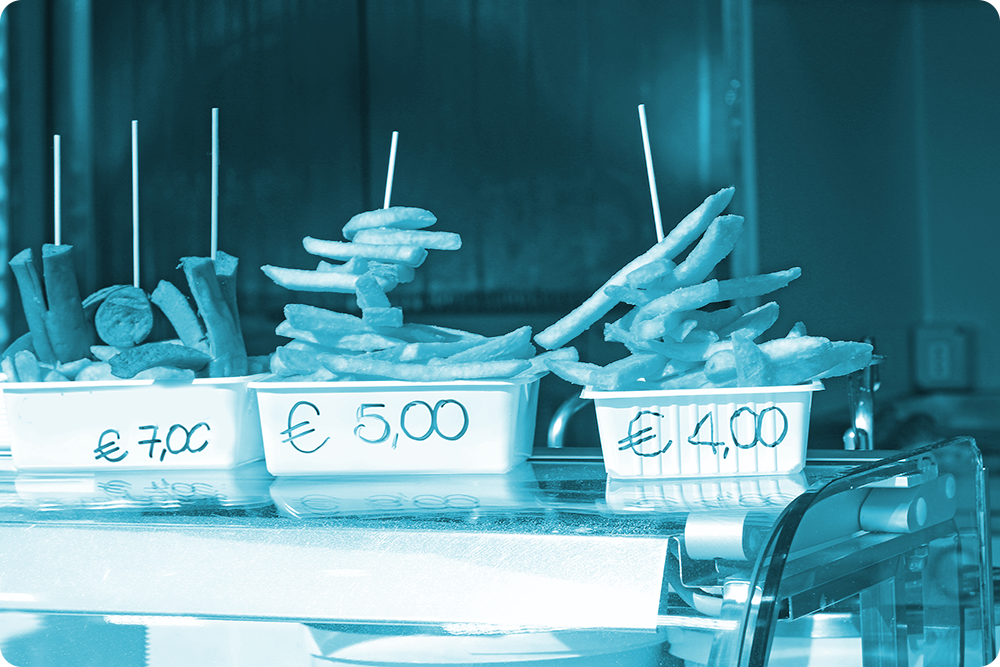London, October 6. More than 60% of top fast food chains operating in Ireland increased their prices in the three months to the end of August, continuing the price growth recorded earlier in the year, according to the latest research from Meaningful Vision.
- The majority of fast food chains (60%) raise prices in the three months to August
- Meaningful Vision Fast Food Price Index shows a 1.2% rise in the same period
- All coffee chains raise prices; strong competition limits increases among pizza outlets
- Footfall concentrates on the afternoon, with declines for morning and late evening
All quick-service (QS) coffee chains raised prices, alongside more than half of burger (57%) and chicken (50%) outlets. Pizza operators were more restrained with price growth – fewer than half (43%) made changes, as competition weighed on the sector.
According to the Central Statistics Office (CSO), Ireland’s food prices rose by 5.1% in August – the steepest increase since December 2023 (5.6%), driven by products including butter, milk, and beef. Overall consumer prices increased by 1.1% over the three months to the end of August, closely mirrored by the Meaningful Vision Fast Food Price Index’s rise of 1.2%.
At the same time, consumer traffic failed to grow for the first eight months of this year, with a slight -0.2% decline. Late evening and night – from 9pm onwards – saw the greatest decline in footfall at nearly -20%, while morning (9am-12pm) traffic also fell -11.5%. The lunch (12pm-3pm) and day (3pm-6pm) saw increases of 4.5% and 7.7%, respectively.
The number of stores has fallen by -2% in the year to the end of August, with a -4.7% decline in the number of pubs and restaurants and a -1.7% decrease in the number of fast food outlets. QS ethnic food outlets also saw a -10.8% decline, while bakery and sandwich stores registered a -5.2% fall. Only chicken and burger shops grew in number – 1.4% and 2.3% respectively.
Maria Vanifatova, CEO of Meaningful Vision, said: “The acceleration in food prices is being driven by higher agricultural output prices, which are a reflection of higher energy and fertiliser prices. On top of the impact on food and beverages in retail, we see the same trend in fast food.
“Competition among pizza outlets, particularly from strong local players, is helping to keep prices low. Average pizza prices are 17% lower than in Northern Ireland, while other products are 10% more expensive. Elsewhere, the rising cost of beef has pushed burger prices up, while international chains have driven increasing prices at coffee outlets.”
In terms of individual products, cookies and cakes led with a 2.8% price increase, while pizza, sandwiches, and burgers also saw growth rates between 1.7% to 1.8%. Bakery and salads saw the lowest growth, underscoring consumer sensitivity to staple categories.
Within the pizza sector, the most significant share of price increases came from pizza, meal deals, and sides with 1.8-2.2% growth, while cold drinks, ice cream and bakery remained flat. Pizza items were hit hardest, with 27% of products rising in price.
In the burger and chicken segments, core products such as burgers, sandwiches, wraps, and meals/combos also faced the biggest share of price increases, with average hikes reaching 3.6%. At the same time, value categories such as snacks, bakery, and hot drinks experienced no growth, helping to maintain affordability. This balance ensured customers paid more for main meals, while add-on items remained competitively priced.
The trend was reversed among coffee shops. Sweet bakery (+28% of items up) and cookies and cakes (+4.1% average increase) drove price growth, while core traffic drivers such as hot drinks (+0.5%) and breakfast items (0%) were largely protected. This strategy ensured essentials stayed affordable, while discretionary add-ons carried higher margins.
Maria Vanifatova added: “The Irish fast food sector is adjusting pricing in a nuanced way, balancing profitability pressures from inflation and labour costs with the need to protect consumer perception of value. Essentials such as hot drinks and breakfast items remain relatively shielded, while discretionary treats and main meals are carrying the bulk of price growth.
“Looking into next year, government initiatives to reduce VAT for hospitality should support consumer demand. All things being equal, this will likely see the market return to growth in 2026 after a challenging 12 months.”
